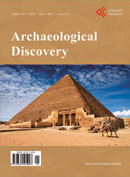At about 8:30 this morning AWOL surpassed five million page
views. One million of these have come since mid October 2015.
In the right hand side bar of AWOL is a form allowing you to receive
notifications of updates to AWOL by email. This seems useful for those
for whom news feeds and their syndications to
Facebook and
Twitter are not. Your address will be safe. Neither AWOL nor
feedburner will send spam. Since I announced this feature in June 2009,
7,714 e-mail addresses have subscribed to AWOL.
If you are reading this in a newsreader or on
facebook or
twitter (or
other social media) you will have to click through to see the form in
the sidebar. If you are reading this by email you have already done
what's required. The software requires a confirmation of your request
to join. If you don't see such a confirmation request, check your spam
folder.
Instructions for unsubscribing from the email list are at the bottom of each message from AWOL.
If you are not reading this on on
facebook or
twitter you are welcome to join in there.
You are invited to visit
The AWOL Index
This publication systematically describes ancient-world information resources on the
world-wide web. The bibliographic data presented herein has been programmatically
extracted from the content of AWOL - The Ancient World Online (ISSN 2156-2253) and formatted in
accordance with a structured data model. In continuous operation since 2009, AWOL is a blog authored by Charles E. Jones, Tombros Librarian for
Classics and Humanities at the Pattee Library, Penn State University.
This publication, The AWOL Index, is an experimental project,
developed jointly by Jones and Tom Elliott, the
Associate Director for Digital Programs at New York University's Institute for the Study of the Ancient World (ISAW),
with the assistance of Pavan Atri, Roger Bagnall, Dawn Gross, Sebastian Heath, Gabriel McKee, Ronak Parpani, David Ratzan, and Kristen Soule.
Creation of The AWOL Index was made possible by a grant from
the Gladys Krieble Delmas Foundation.
Finally. Please use the comment function available on each posting if
you have something to say. And if you have comments or know of
something I should consider including, please contact me directly (cejo
at uchicago dot edu)

PDF (661 K) HTML XML Pub. Date: June 9, 2016






 Plan interactif
Plan interactif Monuments
Monuments Chronologie
Chronologie Index
Index À propos
À propos

